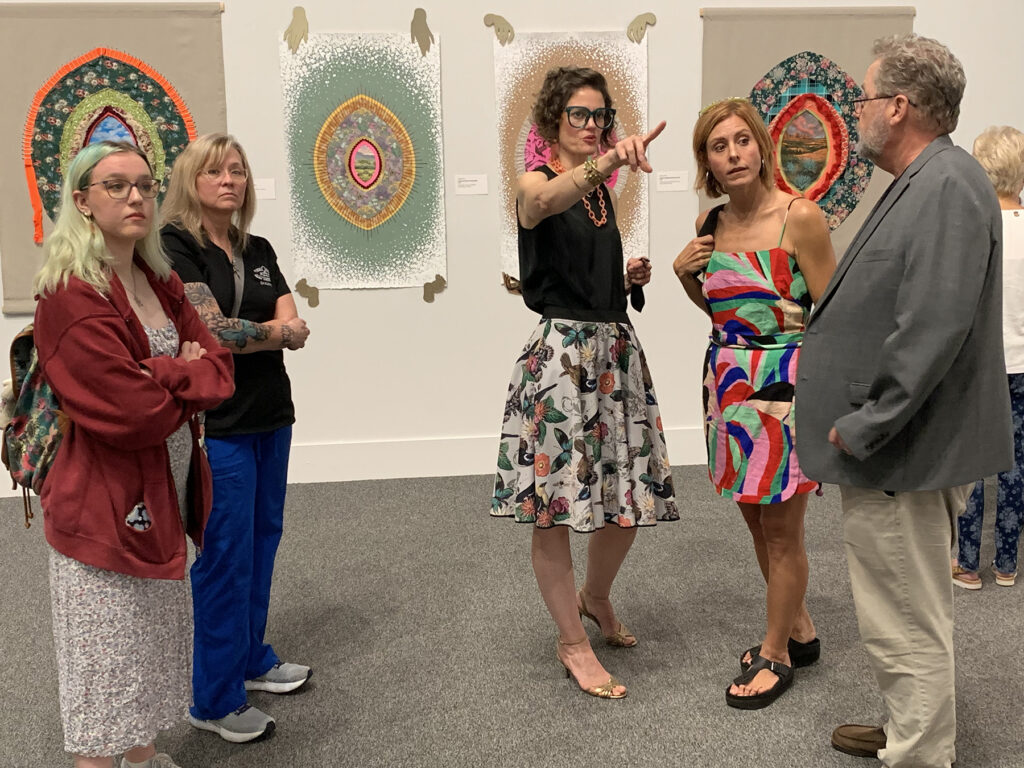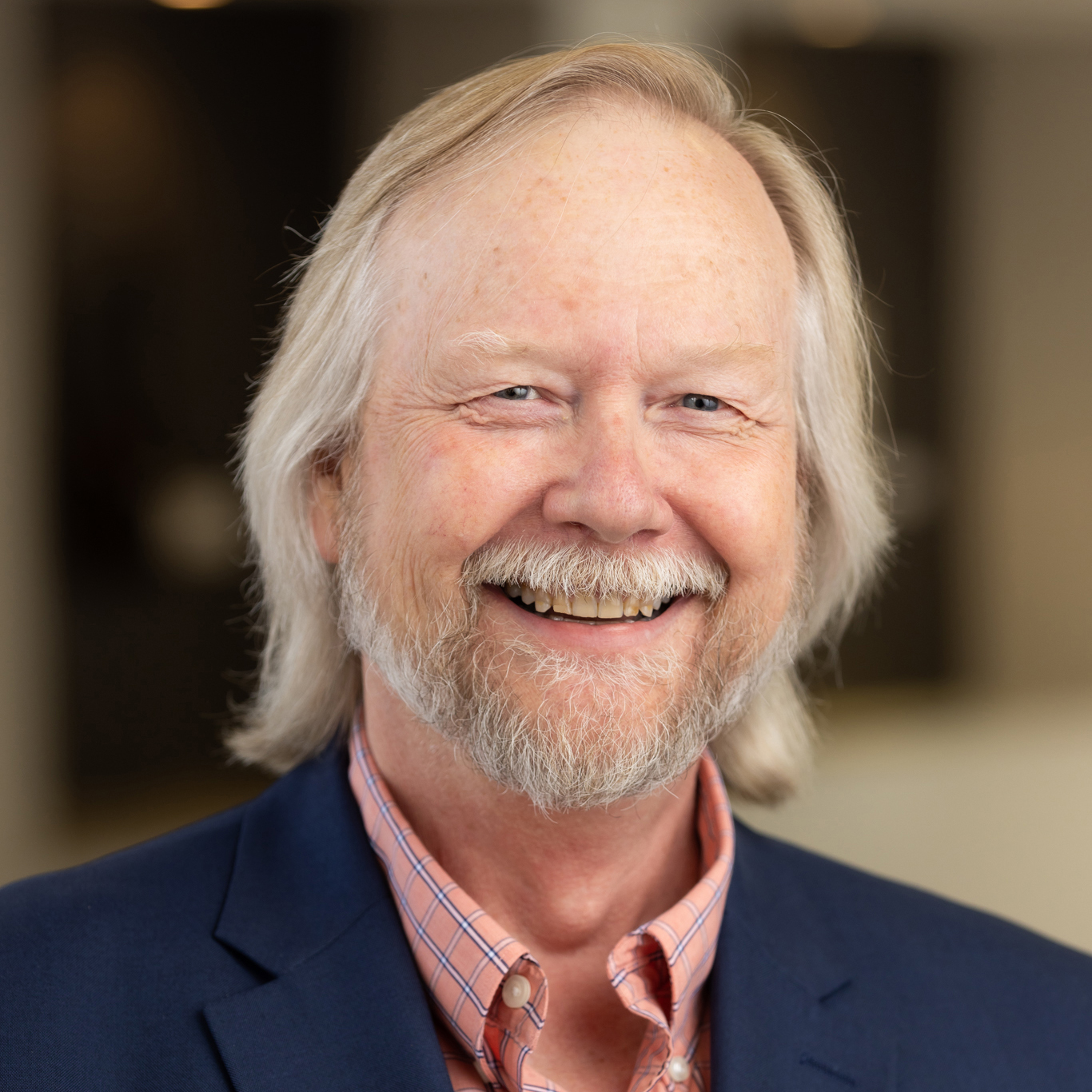Land That I Love, Familias, and Southern Visionaries Close on Jan 6, 2024
There are only two weeks left to view three Albany Museum of Art exhibitions—Land That I Love, Familias, and Southern Visionaries. The trio of exhibitions will close at the end of the day on Saturday, Jan 6. The AMA is open 10 am-5 pm Tuesdays-Saturdays and admission is free for everyone.
“Ashley Cecil’s work in Land That I Love and Ramiro Davaro-Comas’ work in Familias have captured the imagination of everyone who has viewed them,” AMA Executive Director Andrew J. Wulf, Ph.D., said. “They also have given us all quite a bit to think about in how we treat one another.
“Ashley addresses the relationship between people and the environment through her paintings and sculptures, and speaks to the parallels between the oppression of women and the damage humans have done to nature. Ramiro’s work is upbeat and emphasizes family, but it also illustrates how those from other cultures face struggles and challenges as they try to fit into American society. These exhibitions do what art should do. They ask difficult questions, spark critical thinking, and encourage candid conversations.”
Cecil, a Louisville, Ky., native who now resides in Pittsburgh, Pa., said that she “thought a lot about the title of this show because I wanted it to be something that I thought would draw a connection to something that it took me about 10 years to realize, which is there are a lot of parallels between the ways we treat women and the ways we treat the Earth.
“’Land That I Love’ is the second line in one of our most patriotic songs, which is God Bless America. In that song, we have a female-gendered America and a blessing for her. It was my way of trying to link the two together because for at least a decade I have been making art about the connections between feminism and environmentalism.”
Cecil said she began making those connections when she started a family while doing a series of artist residencies with science and nature conservation organizations. A 10-day visit to the rainforest in Brazil with other artists from across the globe was particularly impactful on her.
A unique facet of her exhibition are the piñatas, beneath which are items suggested by people from across the country who responded to an online poll she conducted last summer, prior to the Sept 7 opening of her exhibition.
“I asked the question, ‘If you were a pinata cracked open, what would fall out of you?’ So, everything that is in these two piles in these two pinata installations are objects that people from anywhere could submit, things that they feel they hold deep within them,” she said. “So, our hopes and our fears are all in these piles.”
Asked what she hopes museum visitors take home with them after viewing her exhibition, Cecil said, “I think more than anything, I’m really appreciative when people come to see my work and they say, ‘Now I realize this connection that you’re making.’ There were people at the opening reception who said, ‘I hadn’t thought about the ways that we mistreat our sisters and our friends and our mothers that are similar to the ways that we are making public policy about the way we treat this land, our home.’ I always appreciate those moments, and there were several. That warms my heart that maybe it helps us realize these behaviors are maybe things we normalize we don’t even realize we’re doing.”
Davaro-Comas’s work features tattooed characters sporting trendy streetwear who present a feeling of optimism even as they navigate daunting challenges in unfamiliar environments depicted in his youthful graffiti style. Now a resident of New York state, he immigrated to the United States from Argentina at a young age, a time when he found himself straddling two different worlds.
“All of my characters have three things that kind of tie them all together,” he said. “No. 1 is the white masks. They’re wearing masks because it’s kind of like a mask of assimilation. The skin is all gray because, as immigrants, we’re called aliens. I use the famous gray ‘alien skin’ to put on all my characters. Then, the tattoos are little illustrations that somewhat tell the story of each one of the characters.”
Symbolism also abounds in his work, from miniature lighthouses offering direction to his characters to boats providing means of transportation to mountain terrains and surreal spraypainted landscapes that illustrate the difficulties of transition.
One theme that is center to his work is the strength of family. “The family unit is super important,” Davaro-Comas said. “It is that famous quote, ‘It takes a village.’ And it’s true. Families are the backbone of communities and countries, whether it’s this one or Argentina or whatever. My experience traveling here was with my family. In my work, I wanted to show happy families and people doing things. While they’re moving through some weird world that I created, almost all of them have smiles and happy faces.
“I think in our culture there is a myth of individualism, that the individual will always make it. It’s just not true. We make it because of the community and the people that are behind us and the people that help us. I think the world has gotten smaller because of technology, and we all need to realize that we are all a family together because the climate and the things that are going on in this world are going to ramp up a lot faster than scientists and everyone thought. So, we really need to stick together like a community. It’s a global community.”
Still, Davaro-Comas says the optimistic feeling that his work gives is the artist’s convictions coming through. “I brought a son into the world,” he said. “I have no choice but to be positive. It would be detrimental for him and for myself to be negative. I think as humans we can solve almost any problem that is happening. We have to keep moving forward, but we also have to know our history and where we come from so we don’t repeat it.”
He said he hopes viewers look beyond the surface of his work. He chooses his characters to be an easy access point for viewers—especially young museum visitors—because he wants them to delve deeper into his characters’ stories.
“They can see the tattoos and the colors and the faces, and say, ‘Aw, this is great, I want to look at this a little bit more.’ And that’s when they can start to ask questions,” Davaro-Comas said. “Why do they have tattoos? Why is their skin gray? Why do they have masks? I just want to start a dialogue, and I want people to know that, as immigrants, we’re just here to give more stories to the ever-evolving story that is the United States.”
Finally, the upstairs McCormack Gallery offers AMA visitors a look at Southern Visionaries: Self-Taught Artists From the AMA Permanent Collection. That exhibition includes works by Georgia artists who created art but had little or no formal training.
The exhibition includes works by O.L. Samuel, a Wilcox County, Ga., native who began creating wooden sculptures when injuries forced him to retire as a tree surgeon. Also represented are Eddie Owens Martin, also known as St. EOM, who founded the internationally known Pasaquan visionary art environment in his hometown of Buena Vista, Ga., and Woodrow Wilson “Woodie” Long, who began his painting career as an artist after health issues forced him to retire as a house painter.
“If you haven’t seen these exhibitions or if you have been meaning to see them again, we hope you will take advantage of the opportunity over the final days of these shows,” Wulf said. “Also, you can hear Ashley Cecil and Ramiro Davaro-Comas talk about their work in videos that you can find on the AMA website , and the AMA YouTube, Facebook, and Instagram pages.”
The videos may be seen HERE.
ABOUT THE ALBANY MUSEUM OF ART
The Albany Museum of Art is located at 311 Meadowlark Drive in Albany, Ga., adjacent to Albany State University West Campus just off Gillionville Road. The museum is accredited by the American Alliance of Museums. The Albany Museum of Art is open to the public 10 am-5 pm Tuesdays through Saturdays. Admission is free.
For more information about the AMA, call 229.439.8400. Be sure to follow the @AlbanyArtMuseum on Twitter, AlbanyMuseum on Instagram, and AlbanyMuseumOfArt on Facebook.


